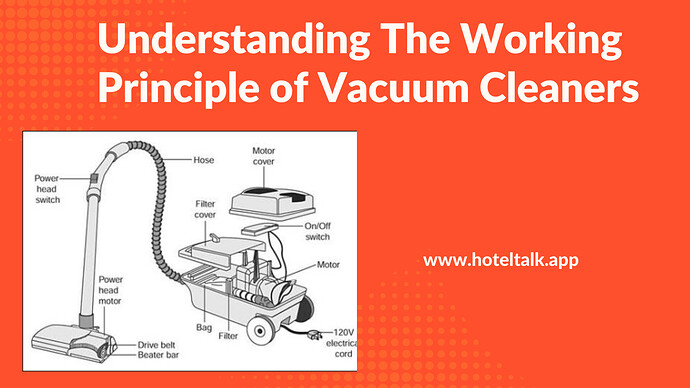Vacuum cleaner suction is negative airflow that removes dirt from carpeting, fabric, and other surfaces. This is achieved using an internal fan rotating at high speed to create a partial vacuum, causing air at the tool head to rush to ‘‘fill’’ the vacuum—sweeping away debris in its path as it does so.
Removable soil must have sufficient air resistance to be caught in the airflow, making suction effective. Difficulties with removing certain kinds of soil stem largely from either its low relative air resistance (fine powders, soot, chalk dust), adherence to the surface (mud, lint), and/or low negative airflow or suction at the tool head.
Suction Variables
Suction is a product of several variables. Ideally, the internal fan is powered and proportioned to create ‘‘vacuum’’ for moving or suctioning a desired volume of air (measured as CFM—cubic feet per minute) in relation to the size of the tool head, the diameter and length of the airflow conduit (hose and internal air channel), and the type, size, and configuration of filter media. Of course, proper air volume and suction would be simpler to achieve and maintain if filtering the air and retaining the dirt weren’t necessary.
Without filter media (cloth and/or paper bags, HEPA, ULPA, and secondary types) to screen and hold particulate of various sizes, air passing through a vacuum cleaner would meet little resistances—suction would remain constant. The room environment would also be dirtier than ever, since dust removed from one end of the vac would simply be blown out the exhaust end.
Until recently, this occurred too frequently. Vacuum cleaner manufacturers sold equipment based largely on suction power and ease-of-pickup. Filters were ‘‘airy’’ and inefficient, trapping bigger particles (10 microns plus), while hefty motors and fans pumped fine particulate out the back of the unit. Exhausted particles increased the need for dusting and cleaning, prematurely clogged HVAC filters, and created allergic reactions in building occupants. Plainly, not all suction is effective suction.
Effective Suction—A System Approach
Effective suction is a product of an intelligent system—one that permits constant airflow with practical filtration to trap particles of soil, large or small. Hence, trying to assess the performance of vacuum cleaners by individually comparing CFMnumbers, amp ratings, filter type or size, etc., is at best a ‘‘part smart’’ approach. It’s howall the componentswork together thatmakes the vacuum work, not any one separately. The key component in a vacuuming system is the relationship between airflow and filtration—and the two are somewhat at odds.
Suction and Filtrations
Excellent suction and excellent filtration sometimes form an uneasy alliance. High-efficiency filters that trap more fine particles often tend to clog more rapidly, choking airflow and suction, and lowering cleaning ability. Good filters, unless cleaned or replaced regularly, reduce vacuum performance.
Filter efficiency, filter access, and filter maintenance are important issues related to suction. Since indoor air quality affects both health and housekeeping concerns consider a four-stage system that filters at least 95–99% of dustdownto one micron—most airborne dust falls into the one to tenmicron range. Secondly, look for a vacuum that permits easy filter maintenance (if filters are difficult to change, operators will tend to allow them to clog reducing suction). Third, train operators to clean vacuum ilters regularly (after every few hours of vacuuming or as needed to maintain optimum airflow and suction).
Conclusion
Effective suction is a product of the right vacuuming system, rather than any single element. So don’t be drawn into a discussion about whose vacuum has the most suction. It’s like evaluating a car based on which engine is bigger, and forgetting all about the suspension, the transmission, the tires, the brakes, the drivetrain, and of course, the driver! A quality vacuum with a qualified operator is like a high-performance car with a skilled driver.
A fine car, driven well, will reach its destination quickly and safely. Vacuuming programs arrive, when operators understand that effective suction is achieved through a combination of the right machine and the right maintenance to maximize performance.
